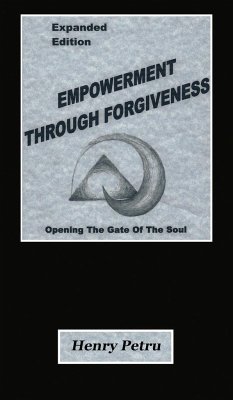Henry Petru's new book lays out the plan, and the steps, of the Forgiveness Process that opens the gate of the soul. After practicing the steps of the Forgiveness Process, you come to understand that forgiveness is the answer and that opening the gate of the soul through forgiveness is the question. Life is feelings, preferably good and happy feelings. Forgiveness is the dissolution of feelings and thoughts about reactions we have to events or incidents, especially those that are hurtful or that evoke negative emotions. The Forgiveness Process presented in this book culminates in love of self, and love of Self, and when you love your Self, you love everything. The Forgiveness Process can be applied to any situation, any injury perceived or real, any injustice, any argument or disagreement, any hurtful incident. It is effective individually as well as in a group, with the group's consensus. With understanding and consensus, it could even be effective among nations in resolving differences. Henry Petru was the caregiver for his wife during her last years. Following her passing, he sought relief from grief and anger through traditional forgiveness, but these methods did not bring peace. Drawing on his experiences with death and life, his 4-plus years in a Catholic seminary, and much study, he learned what forgiveness really is: who gives it, who gets it, and how it's done. These findings are presented in this book








